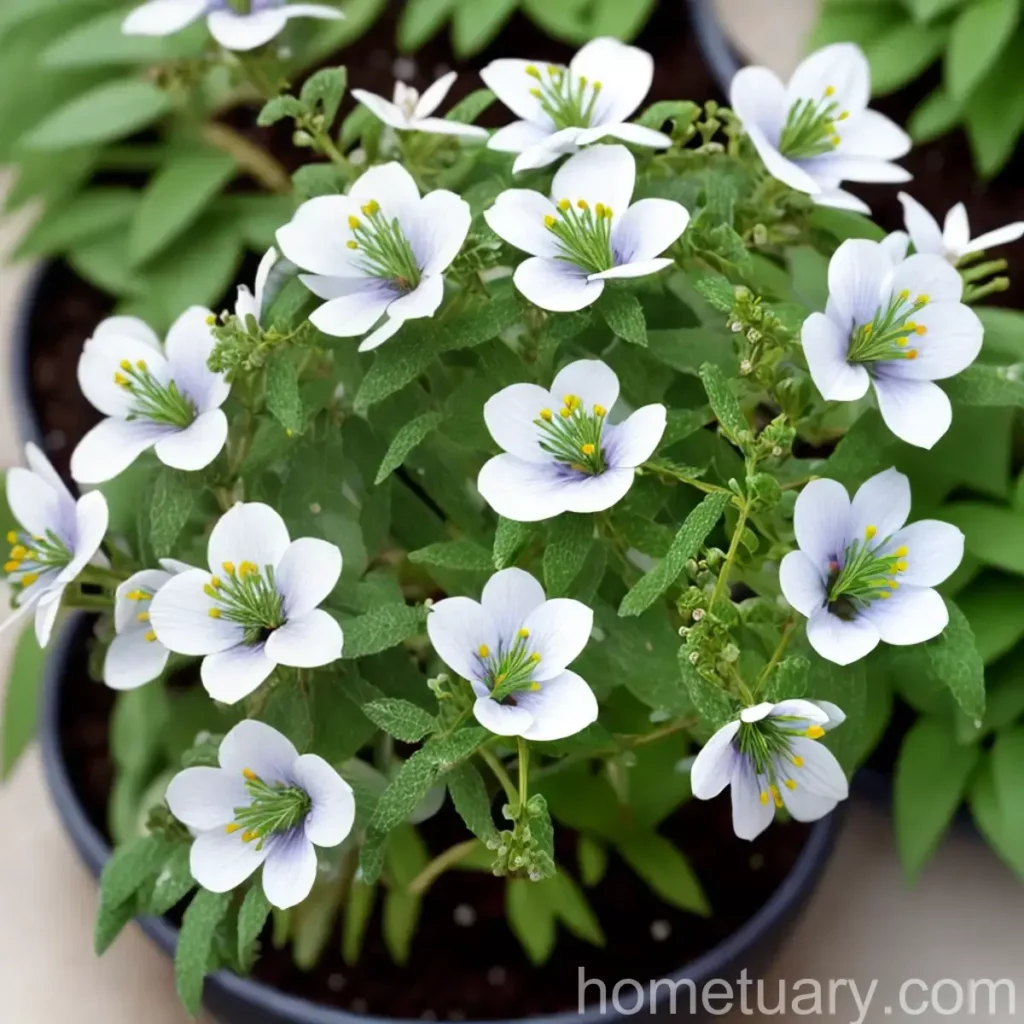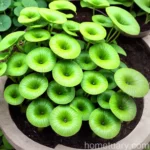Understanding Pellionia Repens (Procris Repens) Care Guide
Pellionia Repens (Procris Repens) is a beautiful and low-maintenance plant with stunning foliage that makes it an excellent choice for indoor gardening. With its trailing growth habit and vibrant leaf patterns, it can bring life and color to any space. In this comprehensive care guide, we will delve into all aspects of caring for Pellionia Repens, from its basic needs to propagation techniques and pest control.
What is Pellionia Repens (Procris Repens)?
Pellionia Repens, also known as Procris Repens, is a species of flowering plant in the Urticaceae family. It is native to Southeast Asia, where it thrives in the warm and humid conditions of tropical forests. The plant is characterized by its small, elliptical leaves which grow in clusters along trailing stems. The foliage often displays intricate patterns, with variations in color and variegation, making it a visually appealing addition to any indoor garden or terrarium.
Key Takeaways – Pellionia Repens (Procris Repens)
Before we delve into the detailed care guide for Pellionia Repens, let’s highlight some key takeaways that will set the stage for understanding the plant’s requirements and characteristics.
- Trailing growth habit with vibrant, patterned foliage.
- Native to Southeast Asia, thriving in warm and humid conditions.
- Low-maintenance plant suitable for indoor environments.
- Ideal for terrariums and hanging planters.
- Requires well-draining soil and moderate watering.
- Susceptible to common pests like spider mites and mealybugs.
Now that we have a brief overview, let’s explore the specific care requirements for nurturing Pellionia Repens and ensuring its healthy growth.
Culture
Understanding the cultural requirements of Pellionia Repens is essential for providing the right environment for the plant to thrive. From its water and sunlight needs to soil preferences, each aspect contributes to the overall well-being of the plant.
Uses
Pellionia Repens serves multiple purposes in indoor gardening and landscaping. Its trailing nature and vibrant foliage make it an excellent choice for:
- Hanging planters: The cascading growth habit of Pellionia Repens makes it an ideal candidate for hanging planters, where its foliage can drape beautifully.
- Terrariums: Its compact growth and attractive leaves make it a popular choice for terrariums, adding a touch of greenery to miniature landscapes.
- Indoor gardens: Pellionia Repens can be used as an ornamental plant to brighten up indoor spaces, bringing natural beauty to various settings.
Water
Watering Tips:
– Maintain moderate soil moisture: Pellionia Repens prefers slightly moist, but not waterlogged, soil. Allow the top inch of the soil to dry out between waterings to prevent overwatering.
– Adjust watering frequency based on environmental conditions: In warmer and drier environments, the plant may require more frequent watering, while in cooler or more humid conditions, less frequent watering may be necessary.
Sunlight
Light Needs:
– Indirect light: Position Pellionia Repens in a location with bright, indirect light. Direct sunlight can scorch the delicate foliage, so it’s best to provide filtered light or partial shade.
– Avoid low-light conditions: While the plant can tolerate lower light levels, it may not thrive or exhibit its best growth and coloration in such environments.
Fertilizer
Fertilization Tips:
– Use a balanced liquid fertilizer: During the growing season, feed Pellionia Repens with a diluted, balanced fertilizer formulation every 3-4 weeks to support healthy growth and vibrant foliage.
– Reduce fertilizer in winter: During the plant’s dormant phase in winter, reduce or suspend fertilization, as the plant’s growth slows down during this period.
Soil
Soil Requirements:
– Well-draining potting mix: Use a well-draining, peat-based potting mix to ensure adequate drainage and avoid waterlogged conditions, which can lead to root rot.
– Organic matter: Incorporating organic matter such as peat moss or coconut coir can help retain moisture while allowing excess water to drain away.
Pruning
Pruning Techniques:
– Regular maintenance pruning: Trim back leggy or overgrown stems to maintain a compact and bushy growth habit. Pruning also helps to shape the plant and encourage new growth.
– Remove any damaged or diseased foliage: Keep the plant healthy by promptly removing any yellowing or diseased leaves to prevent the spread of infections.
Propagation
Propagation Methods:
Pellionia Repens can be propagated by:
– Stem cuttings: Take 4-6 inch stem cuttings and root them in a moist, well-draining potting medium to establish new plants.
– Division: Divide mature plants into smaller sections, ensuring that each division has roots attached, and transplant them into individual containers.
Container Gardening
Suitable Pot Sizes:
– Choose pots with adequate drainage: Select containers with drainage holes to prevent water from accumulating at the bottom, which can lead to root rot.
– Size considerations: Opt for pots that provide ample room for the plant’s roots to grow, but avoid excessively large containers that can retain excess moisture.
Common Diseases
Understanding the common diseases that Pellionia Repens may be susceptible to can help in implementing preventative measures and timely treatments to keep the plant healthy.
Disease Diagnosis
Fungal infections: Look out for signs of leaf spots, mold, or mildew on the foliage, which may indicate fungal infections. Ensure good air circulation and avoid overhead watering to reduce the risk of fungal diseases.
Common Pests
Pellionia Repens is prone to certain common pests that can affect its health and appearance. Identifying these pests and implementing pest control measures is crucial for protecting the plant.
Pest Control:
– Spider mites: These pests can cause stippling and webbing on the foliage. Regularly misting the plant and keeping the humidity levels stable can help deter spider mites.
– Mealybugs: Check for cottony white clusters on the stems and leaves, and treat infestations by wiping the affected areas with a cotton swab dipped in rubbing alcohol.
Botanist’s Tips
Pellionia Repens Rescue
Sometimes, despite our best efforts, plants may still encounter challenges. Here are some tips for rescuing a struggling Pellionia Repens:
- Address overwatering: If the plant shows signs of root rot or wilting due to excessive moisture, carefully trim away any rotting roots and repot the plant in fresh, well-draining soil.
- Provide appropriate light: If the foliage appears pale or leggy, adjust the plant’s location to ensure it receives adequate bright, indirect light.
Fun Facts
Natural Habitat
Pellionia Repens originates from the tropical forests of Southeast Asia, where it thrives in the warm and humid conditions of its native environment. The plant’s adaptation to the forest understory makes it well-suited for lower light conditions, making it a versatile choice for indoor settings.
Air-Purifying Qualities
In addition to its ornamental value, Pellionia Repens also contributes to indoor air quality by helping to remove toxins and improve air circulation. With its air-purifying qualities, the plant offers both aesthetic and functional benefits in interior spaces.
Links to External Resources
To enrich your knowledge and further expand your understanding of Pellionia Repens, consider exploring the following external resources:
- The American Horticultural Society
- Royal Horticultural Society
- University Botanic Gardens, Cambridge
In conclusion, cultivating Pellionia Repens (Procris Repens) can be a rewarding endeavor, offering an array of aesthetic and practical benefits. By adhering to its care requirements, one can enjoy the lush greenery and captivating foliage that this plant has to offer. Whether as a standalone ornamental piece or as part of a carefully curated indoor garden, Pellionia Repens adds a touch of natural beauty to any environment.
By embracing the insights and tips provided in this comprehensive care guide, you can embark on a journey of nurturing and appreciating the unique qualities of Pellionia Repens, ultimately fostering a thriving and visually appealing plant in your home or garden.
This comprehensive care guide offers detailed insights into the essential aspects of caring for Pellionia Repens. From cultural requirements to pest control and propagation techniques, the guide provides a holistic understanding of how to nurture and maintain this beautiful plant. Whether you’re a seasoned indoor gardener or a beginner plant enthusiast, this resource serves as a valuable reference for successfully cultivating Pellionia Repens in diverse environments.















